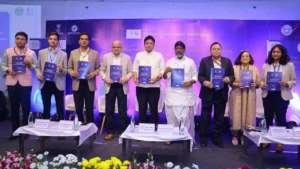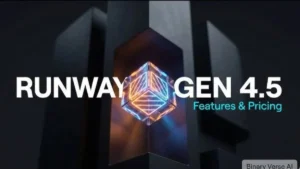In a groundbreaking advancement, NASA is leading the development of the Quantum Gravity Gradiometer Pathfinder (QGGPf), a compact and highly sensitive quantum sensor that promises to map Earth’s gravity field with unprecedented precision. This new technology could transform how we understand the planet’s surface and subsurface, opening up revolutionary applications in climate science, resource exploration, navigation, and planetary research.
What is the Quantum Gravity Gradiometer Pathfinder (QGGPf)?
The QGGPf is the first-ever space-based quantum sensor specifically designed to measure tiny variations in Earth’s gravitational field. It uses cutting-edge quantum technology to detect even the subtlest gravitational shifts caused by underground features like moving water, shifting rocks, earthquakes, and natural mineral deposits.
Unlike traditional gravity sensors, which are large, heavy, and less precise, the QGGPf is:
- Compact, weighing only 125 kilograms.
- Ten times more sensitive than classical gravity sensors.
- Designed for space deployment, making it cheaper and more efficient to launch.
NASA is working alongside private companies and academic institutions to build and perfect this sensor, aiming to conduct space tests by the end of this decade.
Why is Measuring Gravity Important?
Although we experience gravity every day, Earth’s gravitational field isn’t perfectly uniform. Variations occur because of the distribution of mass beneath the surface:
- Mountains, with more mass, exert stronger gravitational pulls.
- Valleys or aquifers, with less mass, exert weaker pulls.
These tiny variations are invisible to the naked eye but contain valuable information about:
- Subterranean water reservoirs (aquifers)
- Mineral and oil deposits
- Tectonic activity and earthquake zones
- Climate-related changes such as ice mass loss in polar regions
Accurately mapping these gravitational shifts can dramatically improve our understanding of Earth’s hidden structures and dynamics.
How Does QGGPf Work?
The Quantum Gravity Gradiometer Pathfinder operates by leveraging principles of quantum mechanics. It uses ultra-cold atoms as sensors:
- These atoms are cooled close to absolute zero.
- Their movements are extremely sensitive to gravitational forces.
- Even the slightest change in gravity alters the atoms’ behavior, which can then be precisely measured.
By capturing these minute changes, the QGGPf provides a detailed gravity map of both Earth’s surface and underground structures, something that older, bulkier instruments could not achieve with the same level of clarity or efficiency.
Key Advantages of QGGPf
| Feature | Advantage |
|---|---|
| Quantum sensitivity | Up to 10 times greater accuracy than traditional tools |
| Compact size | Weighs only 125 kg, easy and cost-effective to launch |
| Space-based deployment | Enables global coverage and continuous monitoring |
| Multi-use applications | Benefits climate science, resource management, security, and planetary exploration |
Broader Applications and Future Impact
The potential impact of QGGPf extends far beyond Earth:
- Planetary Exploration: It could help future missions study the internal structures of other planets and moons.
- Climate Science: By detecting how underground water moves or ice sheets melt, scientists can better predict climate change effects.
- Testing Fundamental Physics: The extreme precision of QGGPf offers new ways to test Einstein’s General Theory of Relativity in space conditions.
- National Security and Navigation: More accurate gravity maps could enhance defense operations and GPS technology.




 NITI Aayog & IBM Unveil Roadmap to M...
NITI Aayog & IBM Unveil Roadmap to M...
 Runway’s Gen-4.5 Surpasses OpenAI and Go...
Runway’s Gen-4.5 Surpasses OpenAI and Go...
 DRDO Successfully Tests High-Speed Indig...
DRDO Successfully Tests High-Speed Indig...







